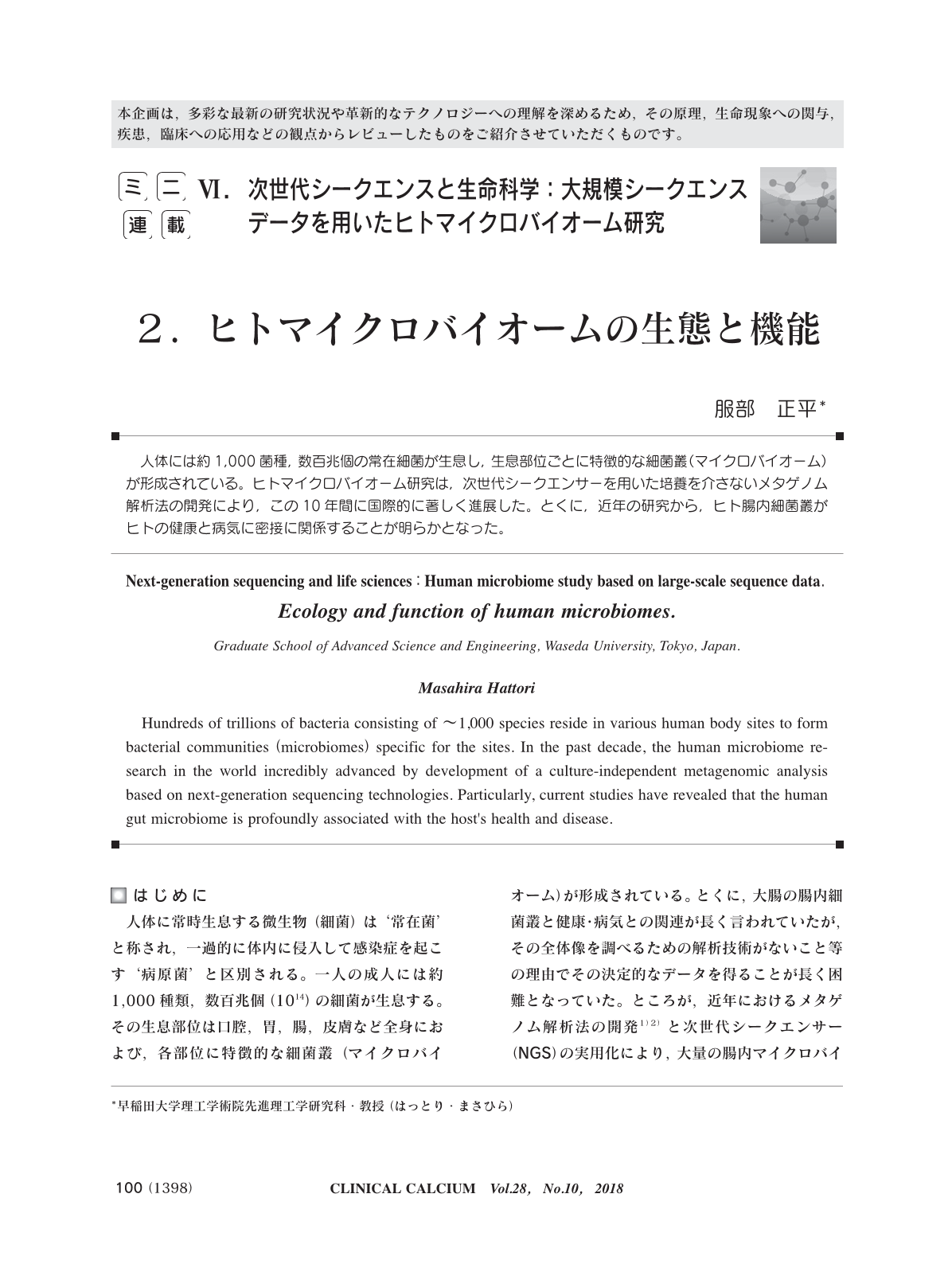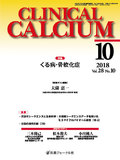Japanese
English
連載 ミニ連載 次世代シークエンスと生命科学:大規模シークエンスデータを用いたヒトマイクロバイオーム研究(Ⅵ-2)
・ヒトマイクロバイオームの生態と機能
Ecology and function of human microbiomes.
服部正平
1
Hattori Masahira
1
1早稲田大学理工学術院先進理工学研究科・教授
1Graduate School of Advanced Science and Engineering, Waseda University, Tokyo, Japan.
pp.1398-1405
発行日 2018年9月28日
Published Date 2018/9/28
DOI https://doi.org/10.20837/42018101398
- 有料閲覧
- Abstract 文献概要
- 1ページ目 Look Inside
- 参考文献 Reference
人体には約1,000菌種,数百兆個の常在細菌が生息し,生息部位ごとに特徴的な細菌叢(マイクロバイオーム)が形成されている。ヒトマイクロバイオーム研究は,次世代シークエンサーを用いた培養を介さないメタゲノム解析法の開発により,この10年間に国際的に著しく進展した。とくに,近年の研究から,ヒト腸内細菌叢がヒトの健康と病気に密接に関係することが明らかとなった。
Hundreds of trillions of bacteria consisting of ~1,000 species reside in various human body sites to form bacterial communities(microbiomes)specific for the sites. In the past decade, the human microbiome research in the world incredibly advanced by development of a culture-independent metagenomic analysis based on next-generation sequencing technologies. Particularly, current studies have revealed that the human gut microbiome is profoundly associated with the host's health and disease.



